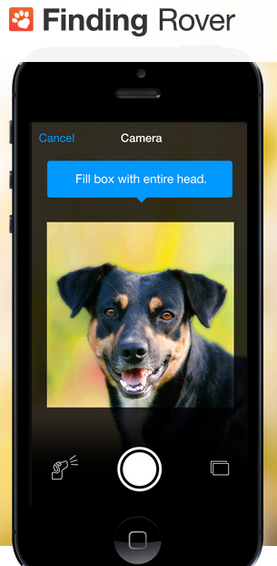 There are at least three lost dogs or “adopt me please!” posts on my Facebook news feed every week. Feeling guilty and clicking “share” was about the extent of the Internet’s ability to help, at least until the Finding Rover app came along. Now those adorably tear-wrenching photos can be put to better use. Finding Rover is an app for mobile and web that lets you upload a picture of your dog, and uses facial recognition to separate your mutt’s mug from others that look like him, but aren’t him. The app reports 98 percent accuracy. All you need is a front-facing shot of your pet that catches a good image of their eyes and nose, the most important features in figuring out whose face is whose. The app then searches photos in the location range to find a matching pet. The automatic search range is five miles, but users can extend that to 2,000 miles if they think their dog might have roamed far afield. People who find a lost dog can take a photo either within the app or from their photo album and upload it to Finding Rover. The app will compare it to photos uploaded by shelters or users that have found (as opposed to lost) a dog. The app will notify the owner of possible matches via a social media photo alert or push notification. Digital lost-and-found dog posters appear on an interactive map in real time. The owner can then contact the caring soul that found their pet and arrange for pick-up. The Oakland Press spoke to Bob Gatt, manager of the Oakland County Animal Control Division (OCACD), who said “Finding Rover will revolutionize how we return lost dogs to their owners. We really encourage every dog owner to upload a photo of their dog to this free app.” OCACD plans to register every dog that comes into the shelter on Finding Rover, making it easy for people to search for their lost pets. People looking to adopt can also search these photos for a likely new friend as easily as people trying to find an old one. Lost dog posters hanging on a bulletin board struck a chord with John Polimeno, CEO and founder of Finding Rover, and he made the connection with the people around him — who were all engrossed in their phones. He spent more than two years working with the University of Utah software development center creating Finding Rover’s proprietary facial recognition tech. He launched Finding Rover on the Apple store in late 2013, and followed with Android and web versions in early 2014. Specialists maintain the Finding Rover software on a daily basis, and people add dogs every day. “We want to do everything we can to safeguard our dogs from being lost forever,” Polimeno said. “A dog is a beloved family member, and if he or she goes missing, it can be devastating to everyone involved.” According to CBS Miami, five people have already found their dogs thanks to Finding Rover. Miami-Dade Animal Services was the first shelter in Florida to hop on board with the free app. The county began uploading its database of dogs in March. The first dog to be reunited with her owner was discovered already waiting in the shelter. Montgomery Country Animal Resource Center in Dayton, Ohio partenered with Finding Rover in July, and one of their recent success stories reunited a dog with his owner the same day that owner discovered the dog missing. Finding Rover is now available in the U.S., Canada, New Zealand and Australia, with more countries to come. After reaching out to Finding Rover, DT learned they’re hard at work on applying the technology to cats, and will keep us up to date on the new release. Source: KPHO News (Aliya Barnwell) / digitaltrends.com A Peaceful Farewell provides compassionate at home pet euthanasia to fellow pet owners in Chandler, Gilbert, Mesa, Tempe, Ahwatukee, Scottsdale, and most of the Greater Phoenix Metropolitan Area.
0 Comments
Buying Flea and Tick Medicine for a Dog? Read This First!With so many brands and types of flea and tick medications being sold today, it can be rather overwhelming choosing what's best for your dog. Here are a few important things to consider before grabbing the first flea and tick control product you see. 1. Usage Flea and tick control products come in a variety of forms, including foggers, wipes, dips, shampoos, spot-ons, collars and oral medication. Some products repel fleas and ticks; some attack the immature forms of the bugs so that they never have a chance to develop and reproduce; and others kill the adult fleas and ticks. There are even some products that do all three. Read the label carefully to select the best product for your situation, and consult your veterinarian if you have any questions. 2. Flea/Tick Species Effectiveness It may be a bit overwhelming to think about, but there are hundreds upon hundreds of flea and tick species worldwide! The dog flea, black-legged tick (pictured above), American dog tick and brown dog tick, just to name a few. Discuss with your veterinarian what type of fleas and ticks are found in your area and confirm that the flea and tick medicine you're considering is effective against those species. Look for medications labeled "broad spectrum," which are effective against several species in one easy-to-use form. 3. You and Your Dog's Preferences Another important consideration is you and your pet's preferences and lifestyle. Perhaps your dog isn't very fond of having spot-on flea and tick preventives and won't stay still during application. Try a flea and tick collar. What if you have a busy lifestyle and want something that is both effective for long periods and that isn't visible on your pet? Check out oral flea and tick preventives (i.e., pills or tablets), as some are effective for up to 12 weeks. There isn't necessarily a right or wrong choice when it comes to choosing flea and tick medication. Just choose what is best for your situation. 4. Intended for Dogs or Cats? There are times when dogs and cats can take the same medication, under a vet's supervision, to resolve an issue. This is definitely not one of them. Not only are some flea and tick medications specifically formulated to be effective for dogs (or vice versa); there are certain ingredients that can actually be harmful, even deadly, to cats. "Cats should never be given products designed for use on dogs," says Dr. Jennifer Kvamme, DVM, "nor should you use your cat products on your dog." Always read flea and tick control products labels carefully and only use as directed. If you have any doubts, ask your veterinarian. A Peaceful Farewell provides compassionate at home pet euthanasia to fellow pet owners in Chandler, Gilbert, Mesa, Tempe, Ahwatukee, Scottsdale, and most of the Greater Phoenix Metropolitan Area.
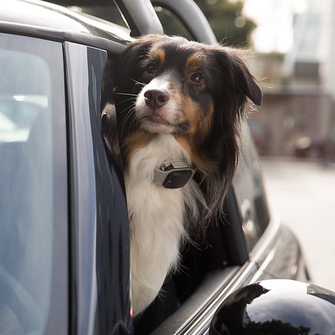 Here's a whole new reason to play fetch with Fido. With Tagg - The Pet Tracker, the activity tracker for dogs, you can view how much activity your pet has had in the past 24 hours and determine if he needs more or fewer walks. And just like advanced activity trackers for humans, this one can differentiate between various activities — in this case, catching a Frisbee, rolling over or playing fetch.This new activity tracking will be available late next week for free to current Tagg owners in an over-the-air update. The current Tagg device is used solely as a tracker and uses GPS to keep tabs on your dog's location. This technology will still be available in the new version, but now includes the activity monitoring. “Activity, exercise and wellness are hot topics these days, and while there are hundreds of ways for people to measure their progress, there has not been a tracking option for pet parents to monitor the activity of their four-legged family members as they do for themselves," Dave Vigil, president of Snaptracs, the company that made Tagg, tells Mashable. "Much like the exercise journals and health records we use to help understand our own health and wellness, the data captured using the Activity Tracking feature will help owners monitor their pet’s overall activity so they can make informed decisions about their pet’s exercise routine and be alerted about changes in their pet’s activity over time.” Pet parents can see how active their dog has been on the free iPhone or Android app, or on a desktop through a free Tagg account on the website. Movement is assigned a "Tagg Point" value based on the intensity and duration of the activity, ranging from resting to highly active. Tagg activity points are assigned to one of the following categories:
Battery life of Tagg depends on how close your pet stays to the docking station, but if the battery does get low, you'll receive a text message reminding you to charge the device. It takes about an hour to charge it. Tagg comes in four colors: white, gray, blue and pink, and attaches to your dog's existing collar with a clip and strap. The rubber strap allows you to attach the Tagg tracker to various sized collars, but it won't work with metal, studded or jeweled collars. The collar is meant to be used for dogs and cats over 10 pounds. In addition to tracking your pets health and location, the free apps can direct you to local vets, dog parks and pet stores. Tagg is available on the company's website and on Amazon.com, Target.com, Apple.com, Petco.com and at Target and Apple stores, and veterinarian offices nationwide. Source: mashable.com A Peaceful Farewell provides compassionate at home pet euthanasia to fellow pet owners in Chandler, Gilbert, Mesa, Tempe, Ahwatukee, Scottsdale, and most of the Greater Phoenix Metropolitan Area.
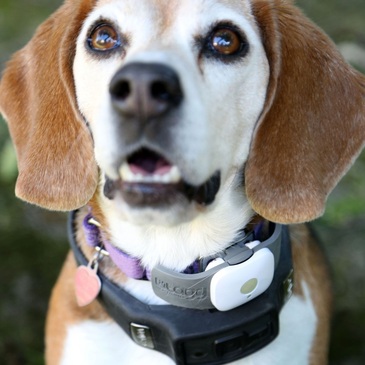 Lucy, a beagle owned by Pat May of Pleasanton, Calif., wears two tech devices -- Tagg, a pet tracker, and Voyce, for monitoring pet activity levels. It’s practically raining cats and you-know-what in the burgeoning subcategory of tech gadgets and accessories that can be attached to our four-legged friends, usually for the owner’s peace of mind. Wearable tech for animals has been around for years: Decades ago, scientists began tracking endangered species with radio-tracking collars, and police and soldiers can attach devices to their dogs to receive commands electronically. More recently, the marketplace is awash with all kinds of cool tracking and monitoring devices for the canine set, typically in the form of a tech-laden collar that can be accessed through Web browsers and mobile smartphone apps. And there’s more on the way: one device still under development, No More Woof, is a headset that claims to be able to read your dog’s inner emotions by monitoring its brain signals. “Wearable tech for dogs was really big at the Consumer Electronics Show this year,” said wearable-tech evangelist Tom Emrich, founder of a collaborative hub called We Are Wearables, “and the latest trend is devices that quantify your pet’s health, just like Fitbit does for humans. We’re now pushing that technology on our dogs so, for example, you can see if your pet’s been running or playing or getting any exercise while you’re at work.” I recently got my hands on a few of the latest products and used our lovable — though hyperactive and food-obsessed — 10-year-old Beagle named Lucy as my guinea pup. First up is Voyce, a $299 lightweight, waterproof and Jetsons-worthy collar that uses Wi-Fi to monitor the heck out of your pet’s health, serving up all kinds of diagnostics to help you and your vet take care of Fido. Voyce even sends you articles by renowned animal experts, each custom-tailored to your dog’s breed and ongoing health statistics. “It’s got sensors on board that allow us to monitor things that are typical with human-based trackers, like rest, calories burned, distance traveled,” said Voyce’s director of program management, Ben Maphis. “But our secret sauce is reading heart and respiratory rates in a noninvasive way, using low-frequency, radio-based technology. And it works on every type of dog, with any size of neck or fur length.” The band comes in a smartly assembled package, like an Apple product. After giving it a quick charge through a base connected by a USB cord, I attach the band to Lucy’s neck and set up an online account. As I fill in Lucy’s profile, I’m asked about her physical condition, from a skinny state with bony ribs “evident from a distance” to “massive fat deposits.” I give Lucy a middle-of-the-road score of 5, or “ribs palpable without excess fat covering.” Directions are simple and the tutorial video helped me in just a few minutes to get the device up and running. I wish I could say the same thing about Lucy, a pint-size hound who’s far more prone to mope around or sit out in the sun for hours. I left the house for an hour and when I came back to check the website, I found basically a flat line on the graph indicating, well, rest. In other words, Voyce had confirmed what I’d instinctively known all along: My dog’s a spoiled and lazy little beast. Next was Tagg, an adorable little band the size of a wristwatch that attaches to your dog’s collar and basically keeps track of his whereabouts through GPS and satellite technology. Thanks to its geofencing feature, Tagg acts like a digital pet-sitter you can monitor through your smartphone app and Web-based browser. It was recently purchased by San Francisco-based Whistle, a canine fitness tracker that raised funding from partners including Nokia and the venture fund of New York Knicks basketball star Carmelo Anthony. I take it out of the box, which contains a few too many parts for my liking, connect the docking station to a wall plug, and while the band is charging I overcome a few glitches to create an online account and download the mobile app. The band costs $99.95, there’s a one-time activation fee of $14.95 and subscription plans that start at $6.95 a month. On the home page, a map of my neighborhood comes up and I’m instructed to create a Tagg Zone within which Lucy is supposed to remain, as in “Stay, Lucy!” In the middle of this square covering my house and neighbors on each side is a golden paw, signifying Lucy’s location. After clipping the device onto Lucy’s collar, I take her for an on-leash walk, intentionally leaving the Tagg Zone. A minute or so later, the alarms start ringing — cellphone alerts, smartphone notifications and, in my mobile app, bright red notices saying “Lucy: I’m outside of the home Tagg Zone.” They repeat every three minutes, each identifying the specific address to which Lucy is closest. Had she been on her own, I could have hopped on my bike or jumped in my car and tracked the little brat down. After we go back into the house, Tagg sends me yet another notice, this one more reassuring: “Hi. It’s me, Lucy. I’m near the home docking station.” Finally, it’s time for some fun. While the $149 Narrative Clip, which calls itself “The Wearable Camera for Moments That Matter,” is primarily intended for human use, this postage-stamp-sized device seemed like a perfect fit for Lucy. It’s simple: clip it onto your dog’s collar and it’ll take a photo every 30 seconds for up to 30 hours. Upload the photos to the Narrative website and — voilà! — you’ve got a shareable timeline, with only the better-quality photos included. “Narrative helps you capture photos without losing presence in the moment, without having to stop and actually take a photo,” says co-founder Oskar Kalmaru. “And while we initially intended this for humans, we see people putting it on their dog during a walk or hanging it on their cat to see what it’s been up to when they were at work.” I clipped the Narrative to Lucy’s collar and, leash attached, headed out into the neighborhood. She was like a fury four-legged paparazzo, snapping up everything in sight as she sniffed her way from car tire to lamp post to well-frequented shrub. Back home, I uploaded the pictures and sat back for the show. “Done,” the message said. “Your moments are ready to be viewed.” Lucy and her camera did good. There was a nice shadow of me against the pavement, my blurred finger while I was adjusting Lucy’s collar, a couple of lovely trees shots, some bushes that looked like a Jackson Pollock painting, and then, last but not least, a perfectly framed shot of my face as I was bending down to disconnect the hipster Beagle from her oh-so-techie bling-bling. POOCH ACCESSORIES VOYCE A lightweight, waterproof collar that monitors your dog’s health and fitness and uses Wi-Fi to sync the data so you can access it anytime, anywhere. Cost: $299, plus a monthly membership fee of $9.95 mydogsvoyce.com TAGG Set up a geofence around your house and be alerted when your dog goes beyond its parameter. Cost: $99.95, and service fees that start at $6.95 a month. www.pettracker.com NARRATIVE CLIP A tiny camera that clips onto your dog’s collar and snaps a photo every 30 seconds for up to 30 hours. Cost: $149 www.getnarrative.com A Peaceful Farewell provides compassionate at home pet euthanasia to fellow pet owners in Chandler, Gilbert, Mesa, Tempe, Ahwatukee, Scottsdale, and most of the Greater Phoenix Metropolitan Area.
|
The PAW Blog...
For the LOVE of Pets The goal of this blog is to help educate pet owners by sharing pet health facts and pet news articles...and ... sometimes put a smile on your face with a cute or funny pet story! Categories
All
Archives
July 2024
Search for any topic...
|

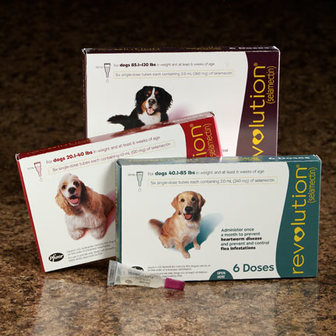
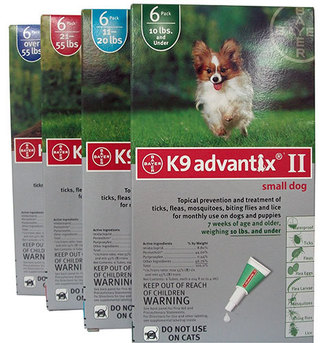
 RSS Feed
RSS Feed

